Castle-Manor House of the Week - Bodiam Castle, East Sussex
September 5, 2012
Bodiam Castle
Bodiam, near Robertsbridge, East Sussex, England, UK
OS Grid Reference: TQ 785256
Maintained by National Trust
Website(s): https://www.nationaltrust.org.uk/bodiam-castle/
(This castle was also featured on this blog on October 12, 2010 after my trip to the UK.)
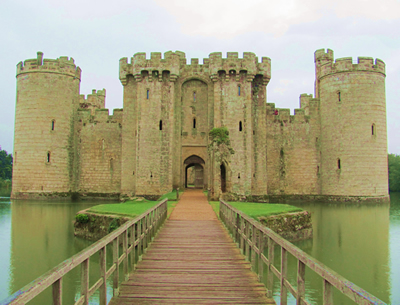 Bodiam Castle was built in 1385 along the River Rother in East Sussex as a fortress to defend the southern coast of England, which is now some miles away. Sir Edward Dalyngrigge, a former knight of Edward III who had made his own fortunes fighting as a member of the Free Companies in France from 1367 to 1377, married into the land-owning family of Wardeuxs who held the manor of Bodiam and obtained a license to crenellate (build a castle) from Richard II to build the stronghold as a bastion against potential French invasion during the Hundred Years’ War.
... Know that of our special grace we have granted and given license on behalf of ourselves and our heirs, so far as in us lies, to our beloved and faithful Edward Dalyngrigge Knight, that he may strengthen with a wall of stone and lime, and crenellate and may construct and make into a Castle his manor house of Bodyham, near the sea, in the County of Sussex, for the defence of the adjacent country, and the resistance to our enemies ...
In witness of which etc. The King at Westminster 20 October.
—Excerpt from the license to crenellate allowing Edward Dalyngrigge to build a castle from the Patent Rolls of 1385–89
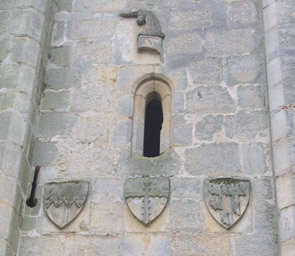 Instead of refortifying his existing manor house, as the license from Richard II premitted, Dalyngrigge decided instead to build his castle from sandstone on a new spot. Its construction was completed quickly in just one phase, so the architectural style of the entire castle is mostly the same. The exact date of Bodiam Castle’s completion is not known, but it was likely before 1392. It became the Dalyngrigge family’s home, and the center of the manor of Bodiam. A carving of Sir Edward’s Unicorn Badge, similar to the one he wore on his his helmet in battle, can still be seen on the gatehouse wall.
Sir Edward lived in the castle of only three years, until his death in 1395, when it was passed on to his son, John, also a favorite knight of the king. John died in 1408 and the castle passed to his widow Alice, and then upon her death in 1443 to his cousin Richard. When Richard also died without issue in 1470, Bodiam passed to Richard's sister Philippa, who wed Sir Thomas Lewknor, thus coming to the Lewknors, a prominent family in Sussex.
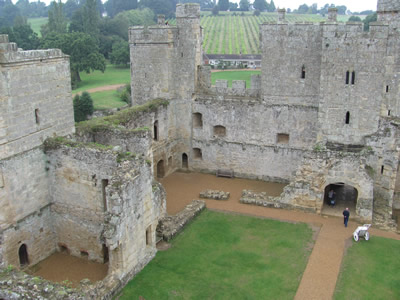 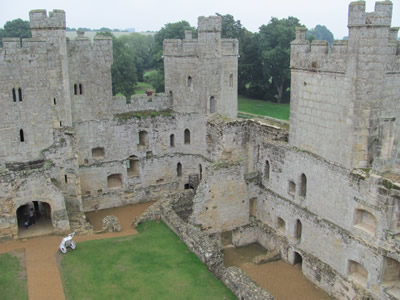
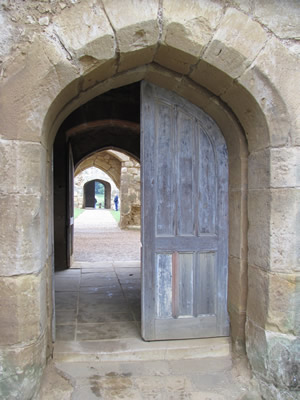 Sir Thomas Lewknor supported the House of Lancaster during the War of the Roses, so in 1483 when Richard III of the House of York was made king, Lewknor was out of favor. He was accused of treason, and an army led by Lewknor’s uncle, Thomas Howard, Earl of Surrey, was sent to lay siege to Bodiam Castle in November 1483. Whether the siege actually took place is not recorded, but it is likely that the castle yielded quickly. Though it was seized, and Nicholas Rigby made constable of the castle, in 1485 when Henry VII of the House of Lancaster became king, Bodiam was given back to the Lewknors.
Several more generations of Lewknors held Bodiam Castle until 1543, when upon Sir Roger Lewknor’s death, the estate was divided among his descendants. In 1588, the castle was bought by John Levett of Salehurst. And then in 1623, Sir Nicholas Tufton, later the Earl of Thanet, purchased most of the estates of Bodiam. It was his son, John Tufton, 2nd Earl of Thanet who was finally able to reunite the castle and manor when he bought Bodiam Castle in 1639.
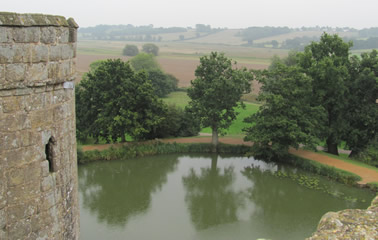 However, Tufton was a Royalist during the English Civil War involved in several battles. In 1643 and 1644, Parliament confiscated some of his lands and levied heavy fines against him. He was forced to sell the castle in March 1644 to Nathaniel Powell, a Parliamentarian, in order to pay his debt. Cromwell then ordered the barbican, bridges, and some of the buildings inside the castle dismantled, and the roof removed to prevent the site from being used as a base for Charles I’s troops, and the castle fell into disrepair.
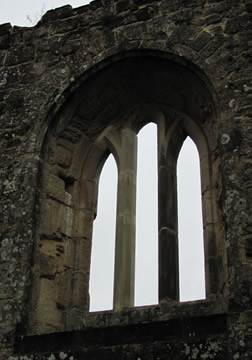 Powell, made a baronet by Charles II, died in 1674 or 1675, and passed the castle on to his son, another Nathaniel. Bodiam then fell into the hands of his daughter-in- law, Elizabeth Clitherow. Sir Thomas Webster acquired the ruin in 1722, and it passed through the Webster family for over a century, remaining a popular ruin overgrown with ivy, drawing tourists because of its association with the medieval period, until purchased by John ‘Mad Jack’ Fuller in 1829. Fuller began work on the restoration, removing a cottage built within in the walls in the 18 th century, adding new gates, and repairing one of the towers. It is suggested that he purchased the castle to keep the Websters from dismantling it and reusing the building materials.
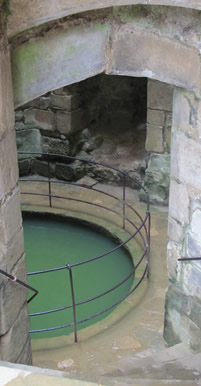 In 1849, Bodiam was sold by Fuller’s grandson to George Cubitt, later Baron Ashcombe. Cubitt refurbished the tower at the southwest corner of the castle, but because wild vegetation was deemed fashionable, did not remove the ivy or trees in the courtyard, despite the damage they were doing to the masonry. Upon Cubitt’s death, Lord Curzon purchased the land from Cubitt’s son in 1916. With the assitance of architect William Weir, Lord Curzon began to systematically restore parts of Bodiam Castle in 1919. The moat was drained, mud and silt removed, and the original footings of the bridges were found. Much of the vegetation was removed so the stonework could be fixed. The well was discovered in the basement of the southwest tower. And a cottage was constructed outside the castle to house a museum and caretaker’s residence. Lord Curzon then gave the castle to the nation, and it has been maintained by the National Trust since 1925.
The National Trust continued the restoration, and added roofs to the towers and gatehouse. Bodiam Castle is now a Scheduled Monument and a Grade I listed building. It is open to the public, and often used as the background is such films as Monty Python and the Holy Grail.
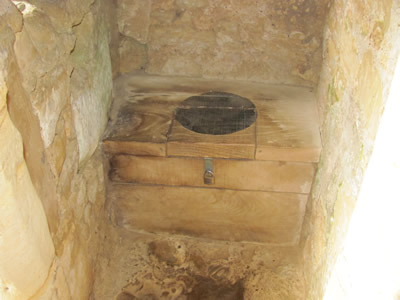 Few castles live up to the romantic ideal of Bodiam, with its wide, carp-filled moat, sweeping battlements, spiral staircases, and gatehouse with original wooden portcullis (a rare example of its type). Bodiam has no keep, as it is built in quandrangal with various chambers built around the outer defensive walls, and the land surrounding it was cleverly landscaped to make it appear larger and more majestic. The water for the moat is supplied by several springs, some within it.
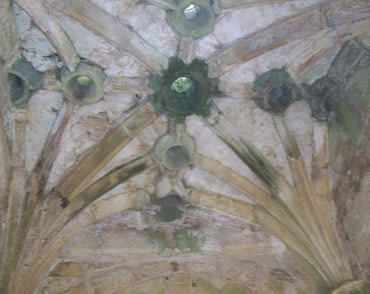 The current entrance to the castle is by a long straight bridge, but the original approach would have been made via two bridges: one that connected the west bank of the moat to a small, octagonal island with a guardhouse, and a second that linked the island and the main entrance of the castle through the barbican. There was also a drawbridge to another entrance on the south side of the castle. The castle maintained twenty-eight toilets, which all drained into the moat. In the roof of the gatehouse, you can see the murder holes, through which soldiers poured and dropped all kinds of nasty things onto their attackers.
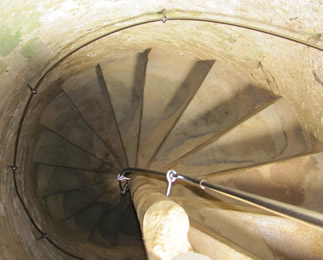 My thoughts upon my visit in September 2010: I was surprised by how narrow and steep the staircases were, and how tall each step was. It was difficult to climb even in jeans and sneakers. I imagined the ladies of old, most shorter than today’s average height of 5’4”, scaling those stairs in long, heavy dresses, and without the aid of a banister. It must have been extremely tiring and troublesome. Even tall soldiers must have had some difficulty mounting the steps swiftly while wearing heavy armor and carrying bulky weapons. I found it very easy to believe that people died from tumbles down the hard, stone stairs.
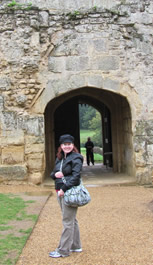 Bodiam Castle reportedly has its share of ghosts, like any medieval castle. A red lady peers out the window of one tower at a distant object. Sounds of ghostly carousing and strange singing are heard in the dead of night. And a boy in Dickensonian garb is seen running through the grounds and across the bridge, only to vanish—perhaps having drowned in the moat in his lifetime.
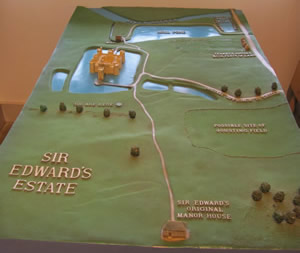
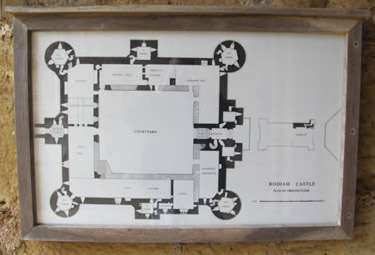
|